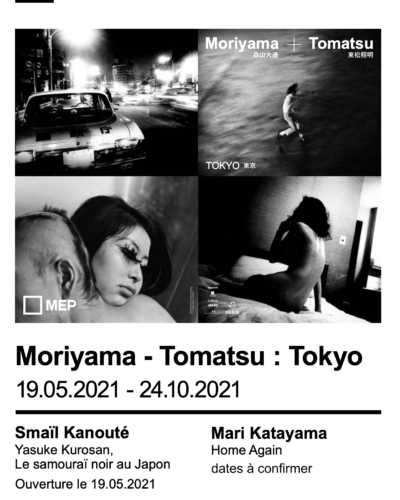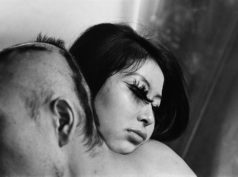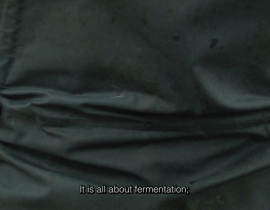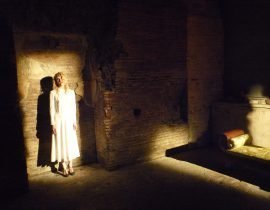
Dear Shaded Viewers,
This is the exhibition I’ve been waiting for always looking longinly at the big poster on the front of the MEP. This will be the first show in Paris for Shomei Tomatsu and the most comprehensive presentation of Moriyama’s work ever held in Paris. Through the exhibition Moriyama-Tomatsu: Tokyo compares their fascination for the Japanese capital. The exhibition is conceived in close collaboration with Daido Moriyama and the widow of Shomei Tomatsu, Yasuko Tomatsu and takes the initial selection made by Moriyama and Tomatsu that had never been realised before the death of Tomatsu in 2012. The MEP decided to make this dream, shared by the two photographers and friends, a reality. Each photographer will occupy one of the two floors of the MEP galleries. The first part, devoted to Tomatsu, will contrast with the second part with a more abundant and dense scenography section reserved for Moriyama. 140 works by Tomatsu have been selected for this exhibition at the MEP. It will begin with the artist’s first photographs taken upon his arrival to Tokyo in 1954. His interest was in the proletariat in a country destroyed by the Second World War: the unemployed, small jobs, street children. From 1958 he was fascinated by the Americanisation of his country and its impact on the Japanese way of life and culture, he began photographing American soldiers occupying military bases in Japan it was the beginning of his “Chewing Gum & Chocolate” project.
In his “Chindon” series he focused on Chindownyassans, poor actors and musicians who dressed in traditional Edo period costumes and became models for street advertisements in department stores. In his early “Asphalt” series he experimented with form and opened the way to worlds that no one had imagined. He devoted an entire series to the asphalt of the streets which he understood as the “skin of the city”.
One of his major books Oh! Shinjuku, published in 1969, includes “Eros” and “Protest” series which feature in the exhibition. The area of Shinjuku holds an essential place in the mythology of Japanese counterculture. It is an area that is known for its nightlife and strip clubs and girlie bars which Tomatsu shows us without taboo. He has used color photography since the 1960’s. The exhibition closes with four portraits of Japan’s leading photographers in the late 70’s: Nobuyoshi Araki Masahisa Fukase, Daido Moriyama- dressed as a Japanese bride-and a magnificent selfportrait of Shomei Tomatsu in costume.
The second part of the show is conceived by Daido Moriyama in close collaboration with the gallery owner Akio Nagasawa. You will see the diversity of Daido Moriyama’s practices: silver prints, colour photographs, silkscreens on canvas, Polaroid, Drop Paper, light boxes, books and magazines, Record is the magazine which Moriyama has been publishing periodically since 2006. The tour begins with images fromhis first book, Japan: a Photo Theater (1968), in which he mixes street photos with portraits of actors. The book caused a scandal, and its aesthetic is very close to the magazine Provoke, which Moriyama joined in 1969. “Accident” is a seris he produced the same yearin which he reappropriated photographs of violent night-time road accidents, found in magazines or captured on the television screen. He highjacks them in the manner of Andy Warhol’s “Death and Disaster” serigraphs which he discovered in 1968. A large selection of photographs from Farewell Photography (1972), considered one of the most avant-garde books of its time presents a new photographic practice using blur, motion, grain and blotches with images at the limit of legibility. In 1982 Moriyama published Light and Shadow in which he imposed a new approach: images with high contrast, omnipresent blacks and tight framing, which made his reputation.
Moriyama is fascinated by the district Shinjuku with its urban chaos. There is an installation based on the “Tights” series in which Moriyama transforms fishnet stockings into an obsessive motif on different supports. When Moriyama was 25 in 1963 he did a series “Pantomine” with photographs of foetuses stored in formaldehyde in a Tokyo maternity hospital. The end of the exhibition will highlight colour in Moriyama’s work which was done with Polaroid in the streets, multiplying the views, smelling the city’s odours, scanning the alleys, advertising the city, scrutinizing the alleys, billboards, posters, commercial stalls and pedestrians. The “Pretty Woman” is the last room it is a selection of colour photographs taken in 2017 in the streets of Tokyo where he captures silhouettes of women in the chaos of the streets and shop windows. In addition the exhibition concludes with a large selection from Record magazine, published by Akio Nagasawa by Akio Nagasawa, which Moriyama conceived and produced entirely from his own photographs.
Both photographers share a non-conformist vision and a taste for marginality. It is interesting to note how the gaze of a stray dog played in both of their photographs. In Tokushu Magazine Tomatsu wrote that he adopted the gaze of a stray dog (“I forced myself to walk with my eyes down”), a posture he would continue to adopt in his urban ramblings. Moriyama took up this analogy, identifying with one of his most famous photographs, Stray Dog (1971) and titling his memoirs a few years later Memory of a Dog. Both artists also have a fascination for the figure of the outsider, that individual living on the fringes of society, freed from the prevailing conformism the price of a certain isolation. Also both have a fascination with the Shinjuku district with its sulphurous reputation.
In the Studio, the space dedicated to emerging talent, the film by the choreographer and visual artist, Smaïl Kanouté, will introduce you to the extraordinary story of Yasuke Kurosan, the black samurai in Japan.
There is much more to be discovered, I only give you a few highlights. There will be a catalogue of the exhibition.
Later,
Diane






































